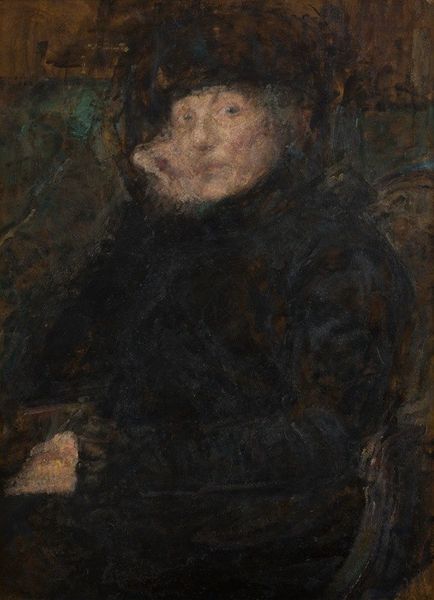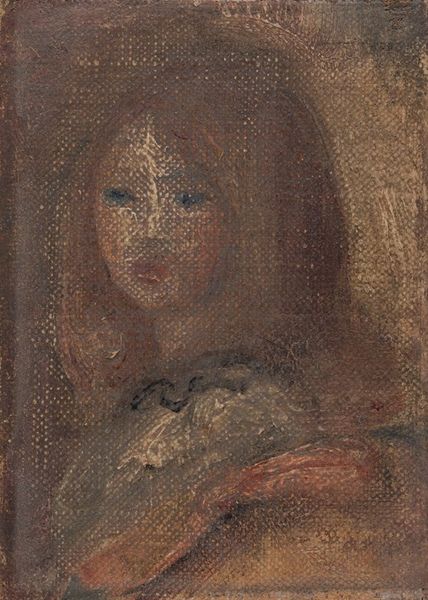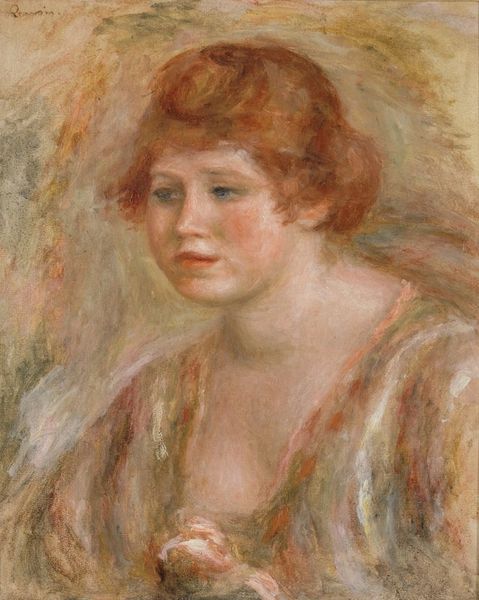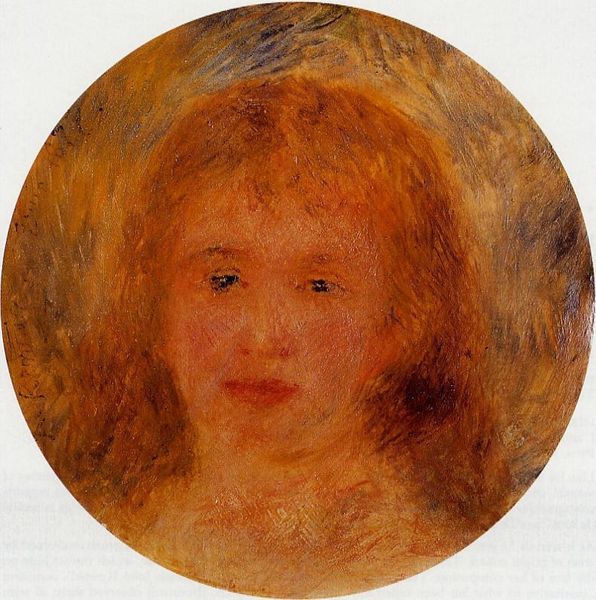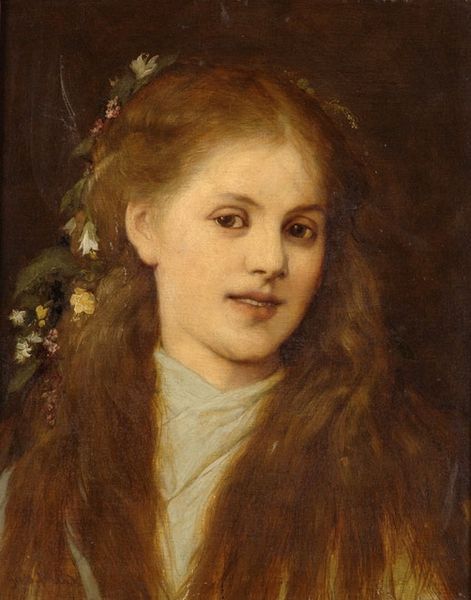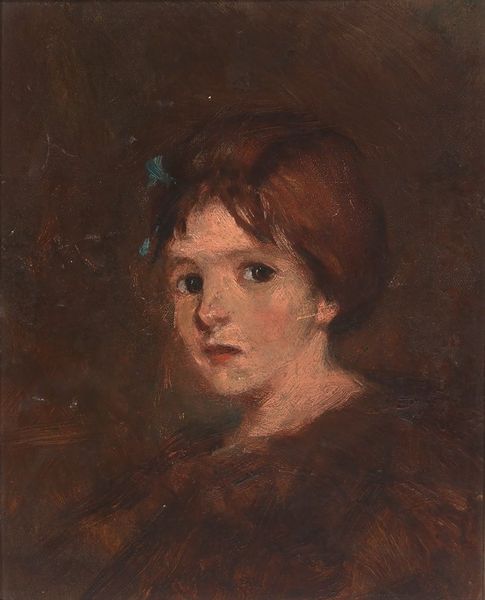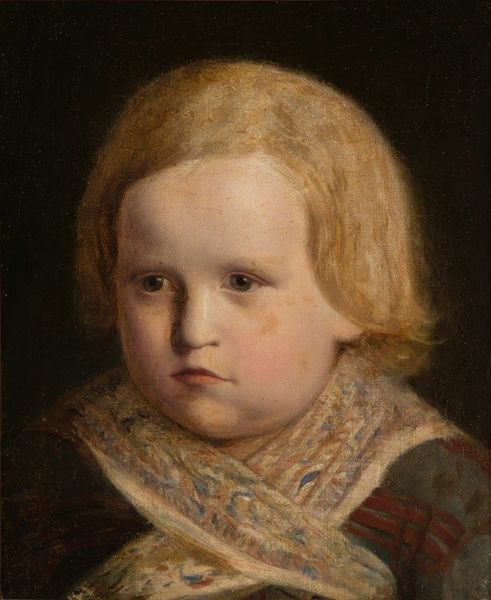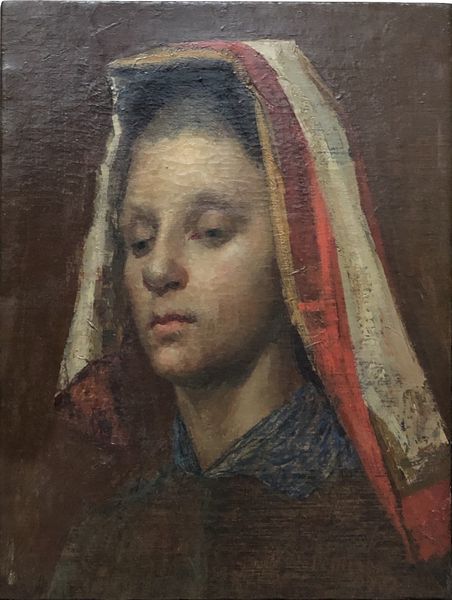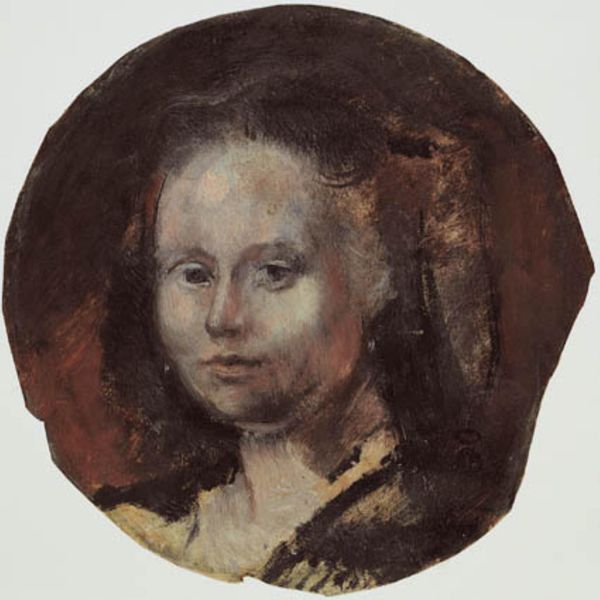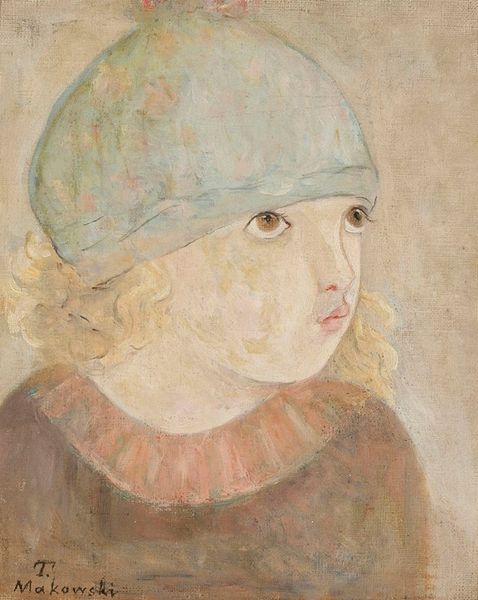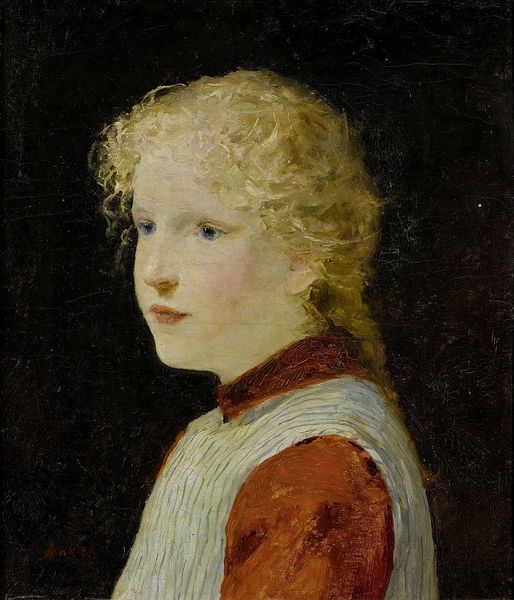
painting, oil-paint
#
portrait
#
figurative
#
painting
#
oil-paint
#
oil painting
#
portrait reference
#
academic-art
#
realism
Copyright: Public Domain: Artvee
Editor: This is Fèlix Ziem's "Etude de femme, copie d’après Rembrandt", created in 1853 using oil paint. It definitely echoes the style of Dutch Masters, but it seems a bit looser, maybe more romanticized than Rembrandt’s originals. How does Ziem’s cultural context shape his interpretation of this older work? Curator: That’s an interesting point about romanticization. Think about the mid-19th century; there’s a real rise in interest in "Old Master" techniques. Ziem’s "copy" isn’t just about mimicking Rembrandt's skill. It's about participating in a broader 19th-century discourse around artistic genius and the role of the artist as heir to that tradition. Museums at this time began codifying art history and constructing narratives of national artistic identities. Consider what that act of copying signified then. Editor: So it's not just flattery, but also claiming a place in that artistic lineage? Curator: Precisely! And consider where these works might have been displayed. Not just in the grand salons, but increasingly, in public museums. That changes how they are viewed. This 'study', created after Rembrandt, is also subtly asserting French art's own power and ability to master past achievements, even those of other national schools like the Dutch. Who has the right to that history becomes the question, really. Editor: That’s fascinating. I hadn’t considered how museum culture influenced the artist's choices, even in something like a "copy." Curator: The public display and validation of art powerfully affect the art production. We see this work now divorced from that specific context. But that is part of its enduring message too! Editor: Thanks. It's given me a lot to consider about how art interacts with its contemporary audience and institutions, even when referencing the past.
Comments
No comments
Be the first to comment and join the conversation on the ultimate creative platform.
